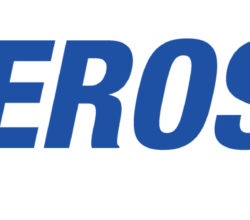pdf format version of the call for papers is available. Extended abstract submission deadline is December 12, 2018.
Call for Papers
Papers are solicited in the areas listed below for the 2019 IAA Planetary Defense Conference, hosted by the Johns Hopkins University Applied Physics Laboratory and NASA, under the auspices of the International Academy of Astronautics (IAA). The 2019 PDC will include a hypothetical impact event to be both a part of the conference (similar to what was done at the 2013, 2015, and 2017 conferences), and, where appropriate, to be used as a reference for papers and presentations (more details below ). A student paper competition will be held, and papers eligible for the student competition should be indicated as such during submission. Limited student financial support may be available; students may inquire with the conference co-chairs: Bill Ailor [william.h.ailor(at)aero.org], Brent Barbee [brent.w.barbee(at)nasa.gov], and Gerhard Drolshagen [gerhard.drolshagen(at)uni-oldenburg.de].
A broad theme of the conference is to identify the technologies, techniques, missions, data sets, and processes that most need development for an international program of planetary defense. Topic areas for papers include:
Key International and Policy Developments
• The latest policy planning and developments to ensure an international planetary defense strategy.
• National strategies and plans for planetary defense.
Advancements in Near Earth Object (NEO) Discovery
• The latest developments, products, and results on discoveries of potentially hazardous asteroids and comets.
• Current NEO survey progress, needs for future surveys, and related astronomical techniques for discovery of NEOs.
• Prospects for future NEO survey systems and efforts.
New NEO Characterization Results
• The latest findings related to characterizing NEO physical, dynamical, and orbital properties.
• Characterization of properties most crucial to planetary defense mission success.
• Technologies to characterize NEOs via remote sensing and spacecraft flyby/landing.
• Recent work on planned or active flight missions to NEOs (e.g., OSIRIS-REx, Hayabusa 2, etc.).
Deflection & Disruption Modeling and Testing
• Recent results in modeling/experimentation that characterizes the effects of proposed NEO deflection and disruption techniques and technologies.
• Recent progress on key technologies needed to deflect, disrupt, or otherwise mitigate hazardous NEOs.
Mission & Campaign Design
• Designs for planetary defense flight validation missions (e.g., DART, etc.).
• Development and validation of critical technologies for planetary defense.
• New work in the design of in-space mission campaigns to respond to hazardous NEOs (reconnaissance, characterization, mitigation).
• NEO response mission campaign developments, including an international approach.
Impact Consequences
• New results on the effects of ocean and land NEO impacts, including tsunamis generated by impacts; characterization of the damage footprint for NEO impacts.
• Interactions between incoming NEOs and the atmosphere; understanding the process of atmospheric break-up and airbursts for a variety of NEO types; this could include summaries of the Tunguska and Chelyabinsk superbolides, and lessons learned.
• Possible post-impact effects on the atmosphere, near-Earth space and space systems (e.g., communications).
• The hazards of an individual impactor, as well as consideration of the ensemble hazard integrated over the predicted population of impactors.
• The transition to regional and global effects as a function of impactor size, location, and other factors.
Disaster Response
• Lessons learned from exercises, alerts, public education, risk communications strategies, and warnings of natural disasters that would inform similar notices for a pending NEO impact disaster.
• Current and near-future disaster response plans and preparations specific to NEO impacts.
The Decision to Act
• Current outlook on the NEO response decision-making process at various levels (e.g., global, national, etc.).
• Areas of greatest risk and suggested analysis tools that could aid decision makers.
• The value of international collaboration, and ways to distribute the responsibility for planetary defense.
• Legal issues related to NEO mitigation.
• Cost effectiveness of mitigation options.
Public Education and Communication
• Current status of planetary defense / NEO-related public education and communication efforts.
• Concepts for improving NEO / planetary defense public education and communication.
• Integration with disaster response, including risk communication, dissemination, and alerts.
The conference will include an exercise where participants will simulate the decision-making process for developing deflection and civil defense responses to threats posed by a hypothetical asteroid designated “2019 PDC”. Attendees are invited to use 2019 PDC as a subject for their own exercises and for papers to be presented at the conference. Details on the threat will be posted at https://cneos.jpl.nasa.gov/. To encourage research and presentations on threats posed by comets, details of a hypothetical long-period comet threat will also be posted at this site
CONTACT:
International Academy of Astronautics
6 rue Galilée, BP 1268-16, 75766 Paris Cedex 16
Tel 331 47 23 82 15, Fax 331 47 23 82 16
iaapdc (at) iaamail.org










